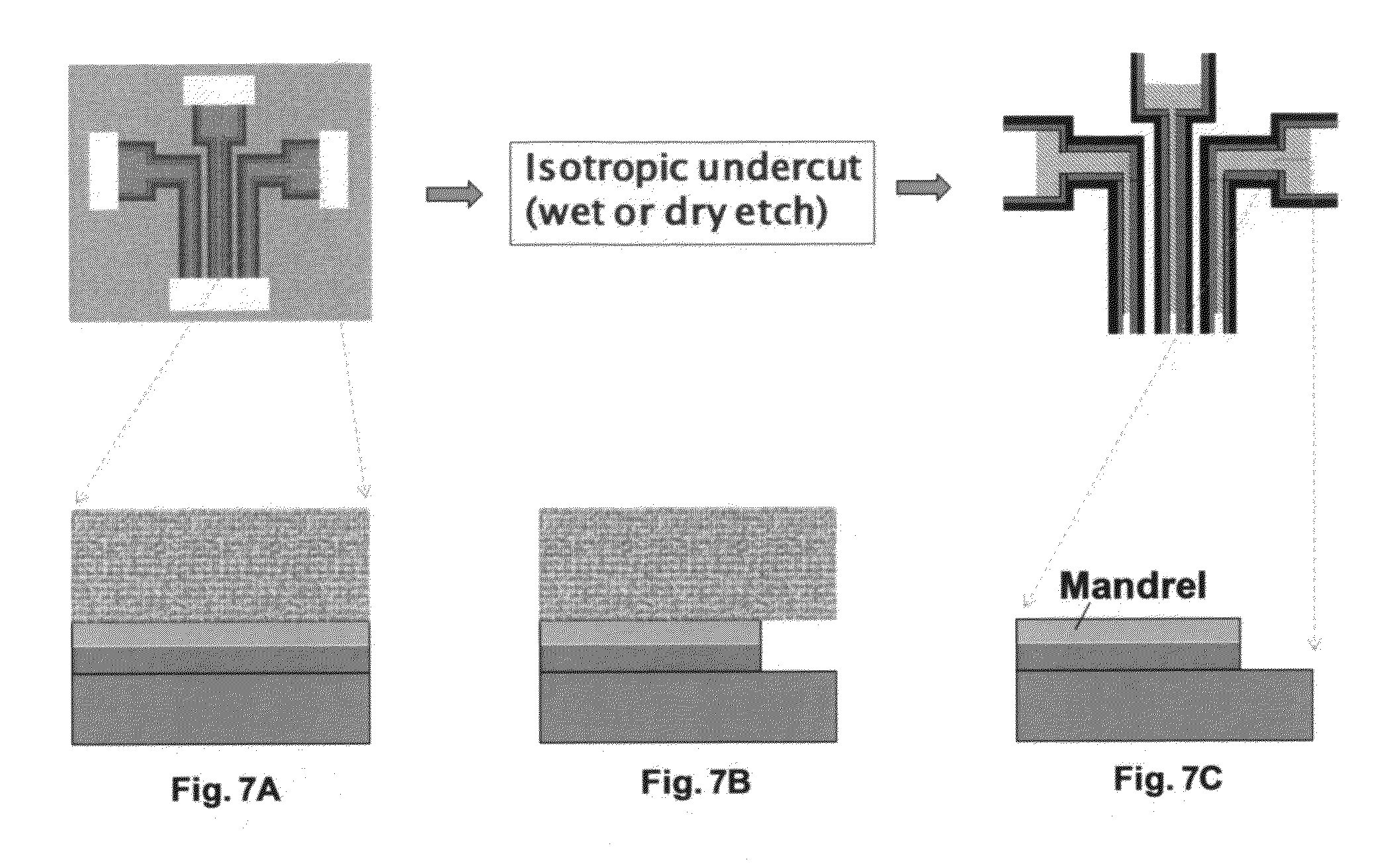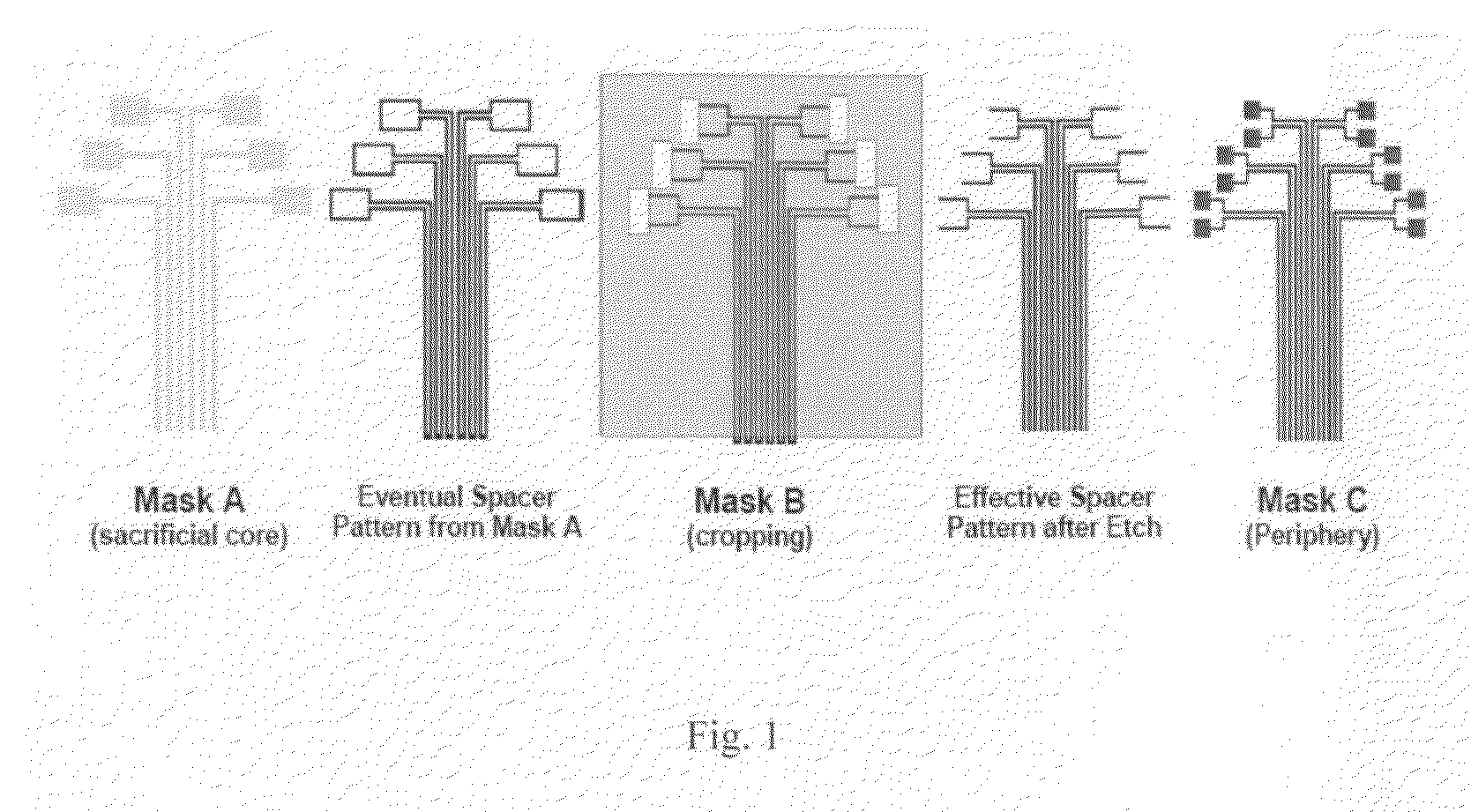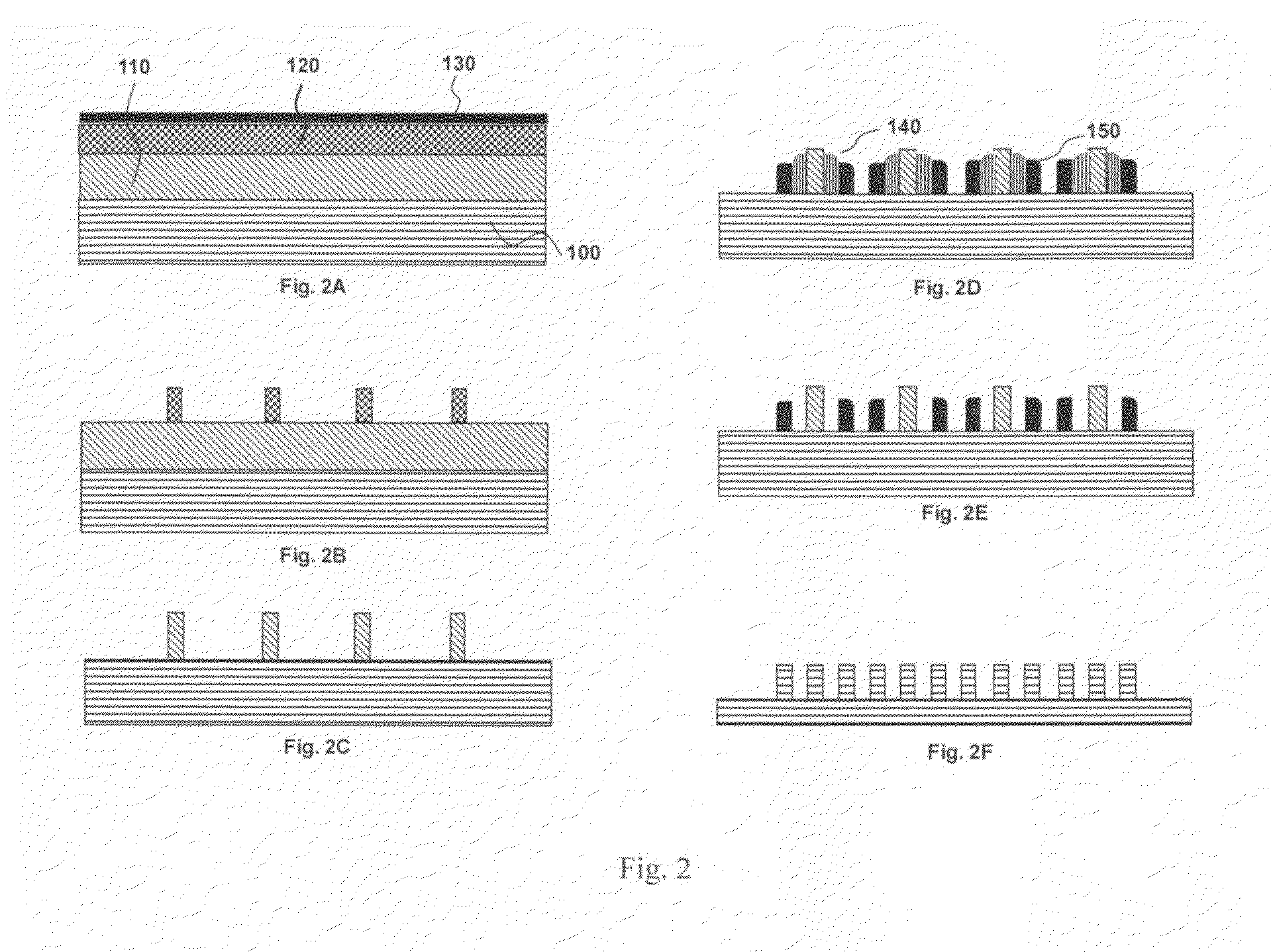Methods to increase pattern density and release overlay requirement by combining a mask design with special fabrication processes
- Summary
- Abstract
- Description
- Claims
- Application Information
AI Technical Summary
Benefits of technology
Problems solved by technology
Method used
Image
Examples
Embodiment Construction
[0016]Embodiments of the present invention pertain to methods of forming patterned features on a substrate having a pitch reduced to one third of what is achievable using standard lithographic techniques. Compared with self-aligned double patterning (SADP) process which has been used in the production of high density 1-D lines / spaces, the invented technique significantly increases the feature density by using a slightly more complex process. While this technique can form bit lines, wider lines and features (e.g., line-end pads, power supply lines, string select lines in NAND devices, etc.) are usually necessary on same layer to form working devices, which requires multiple masks to be used to pattern one critical layer. Therefore, it is important to research a mask design method that not only allows reasonable (i.e., not too tight) overlay specifications, but also requires the minimum number of masks to reduce the process complexity and costs.
[0017]To better understand and appreciat...
PUM
 Login to View More
Login to View More Abstract
Description
Claims
Application Information
 Login to View More
Login to View More - R&D
- Intellectual Property
- Life Sciences
- Materials
- Tech Scout
- Unparalleled Data Quality
- Higher Quality Content
- 60% Fewer Hallucinations
Browse by: Latest US Patents, China's latest patents, Technical Efficacy Thesaurus, Application Domain, Technology Topic, Popular Technical Reports.
© 2025 PatSnap. All rights reserved.Legal|Privacy policy|Modern Slavery Act Transparency Statement|Sitemap|About US| Contact US: help@patsnap.com



